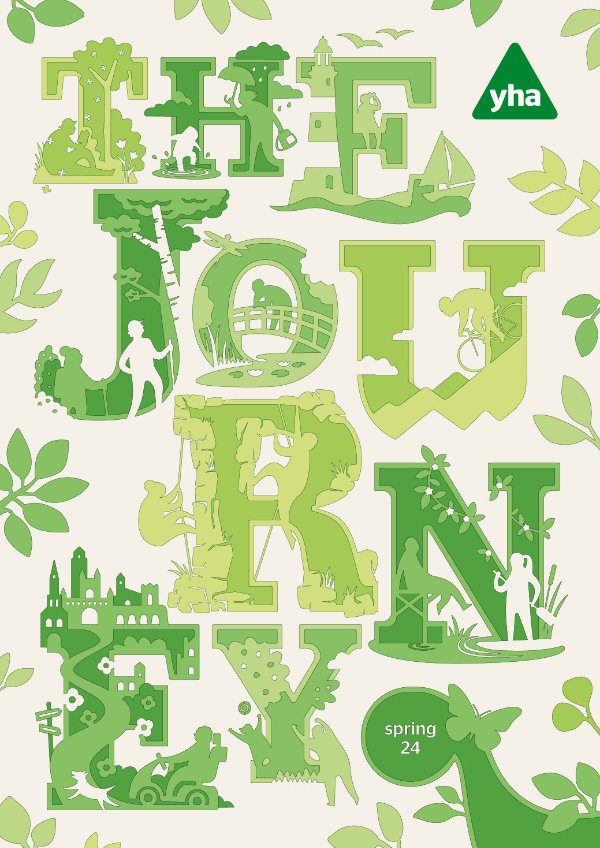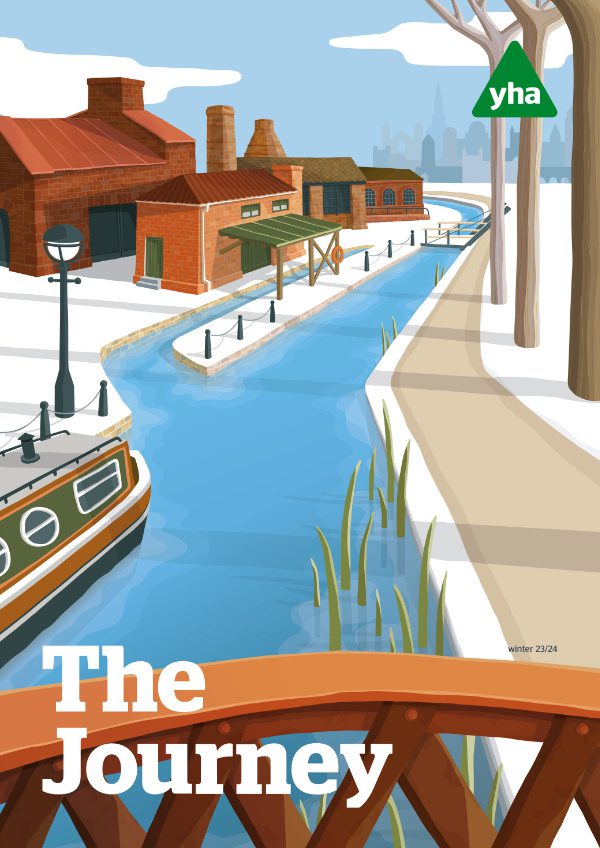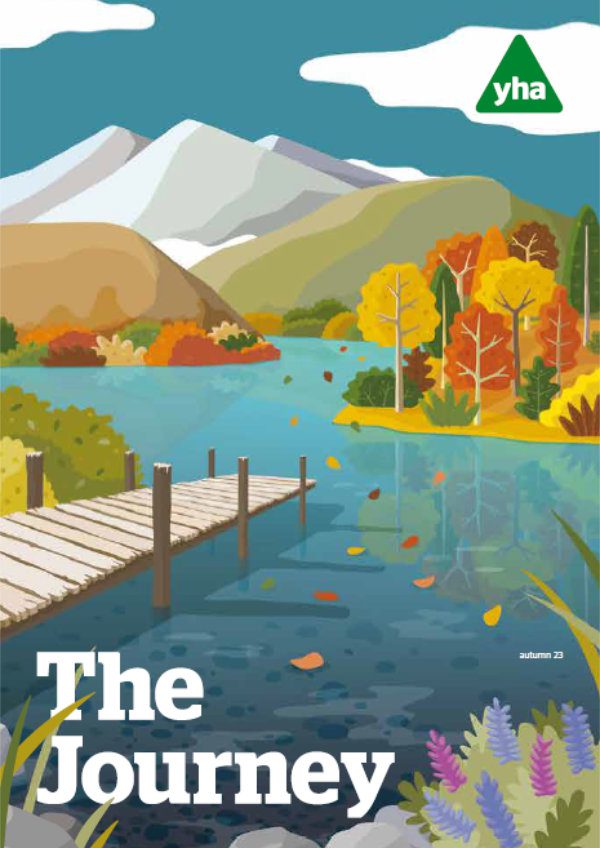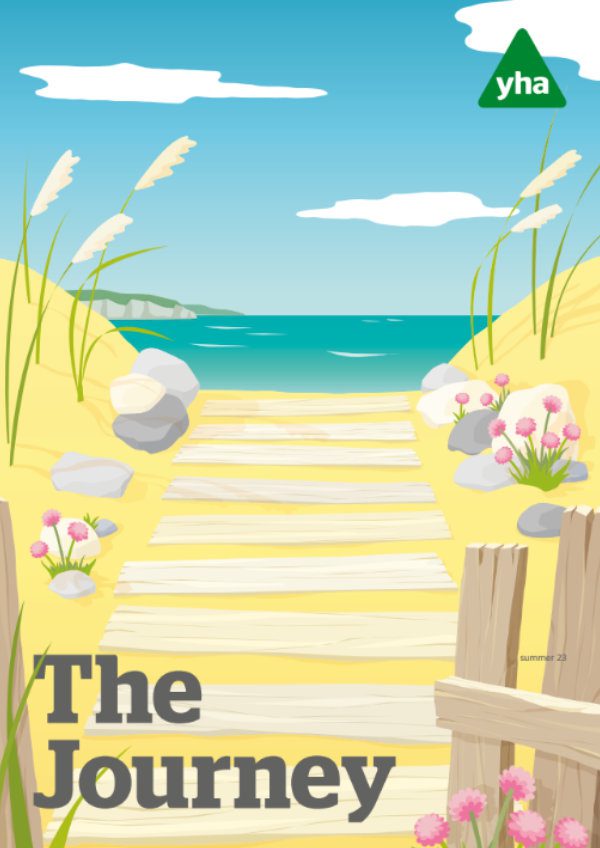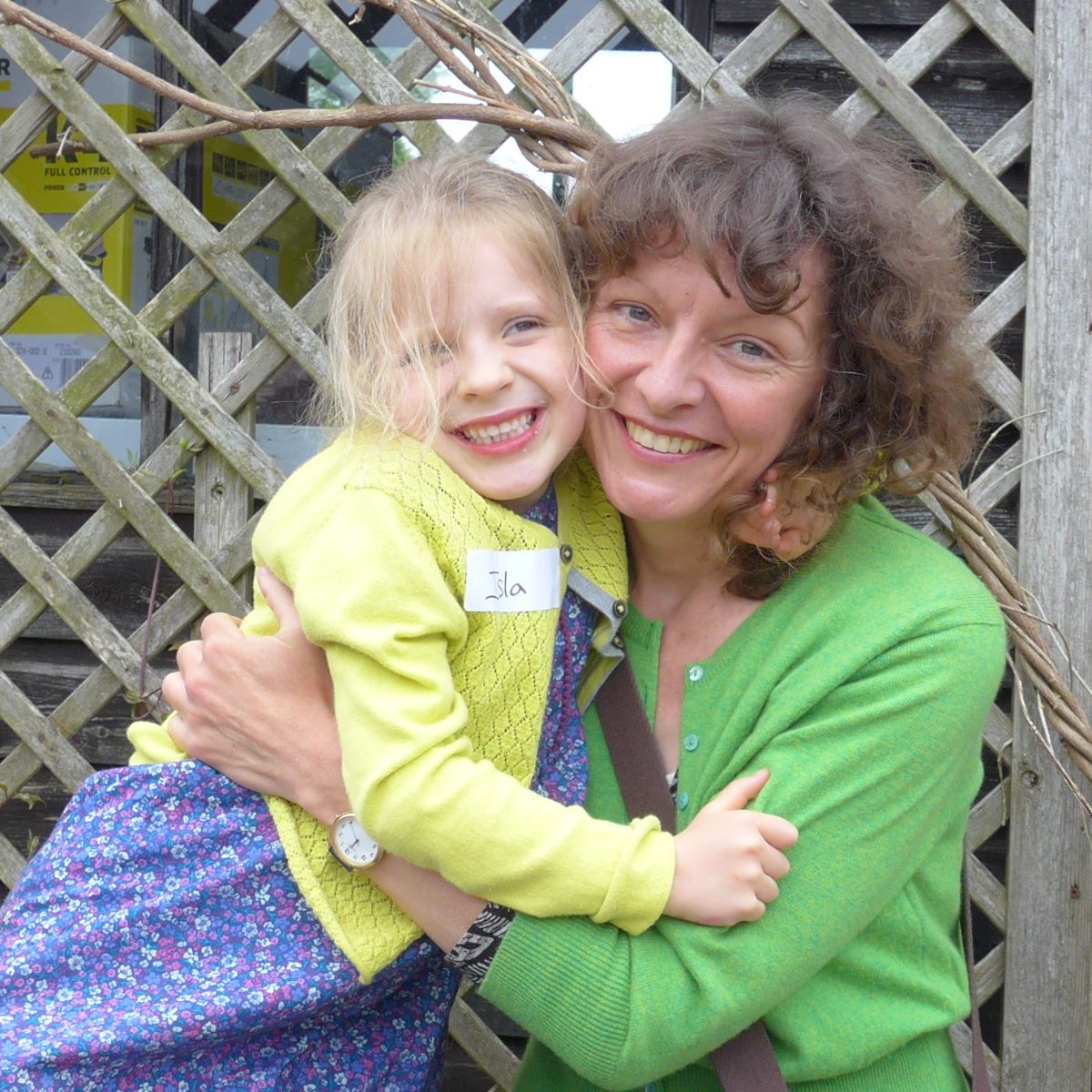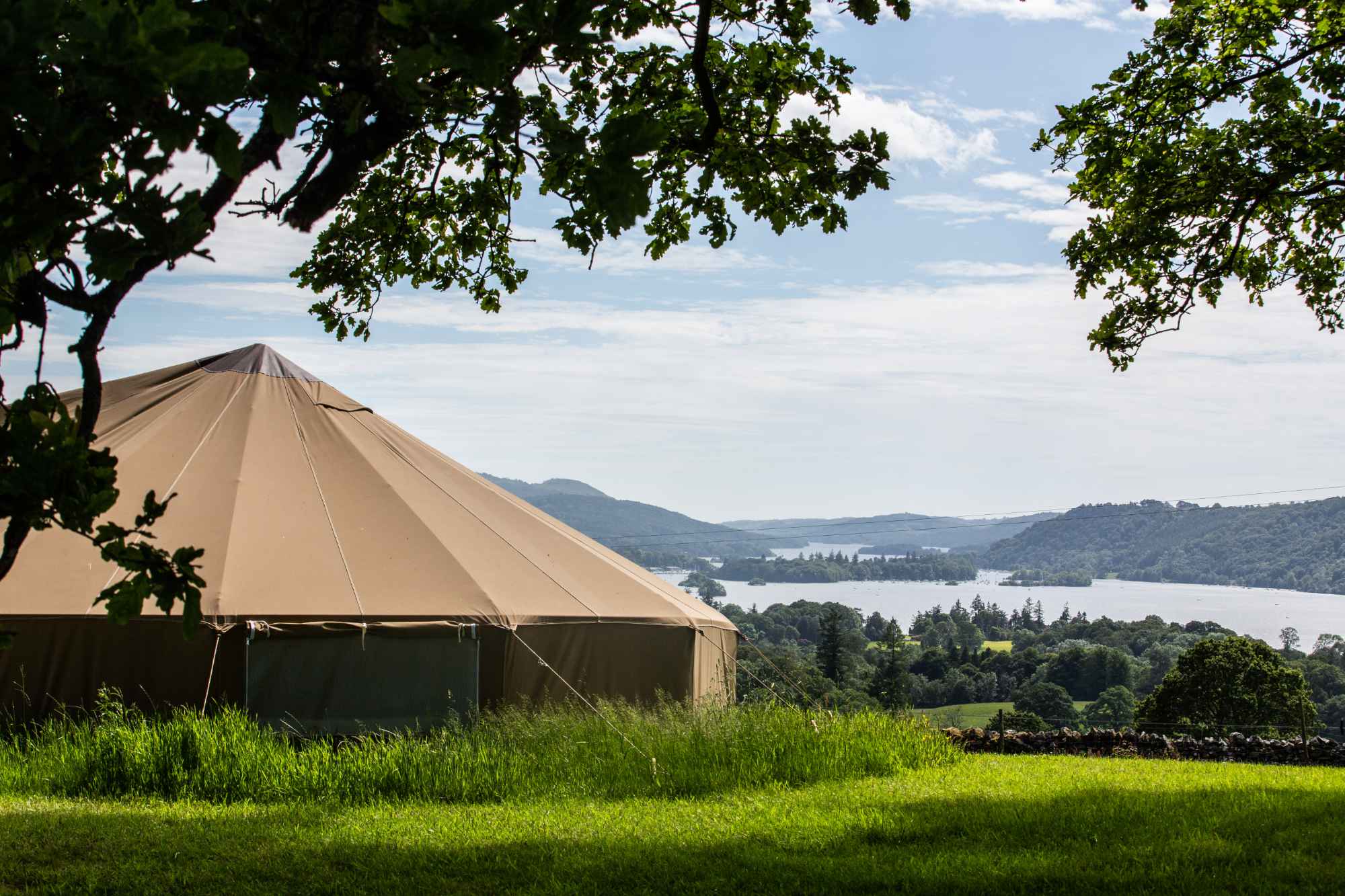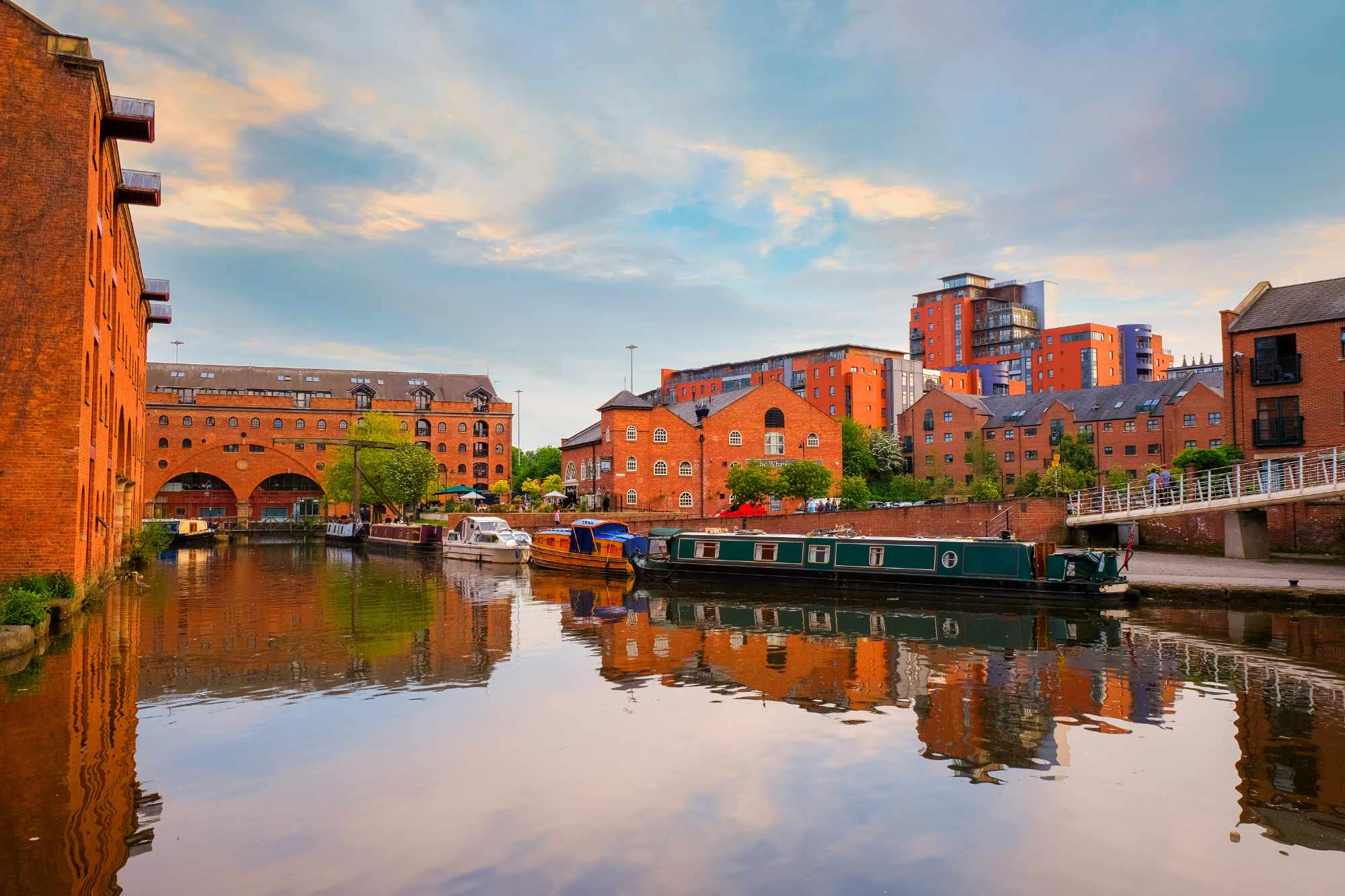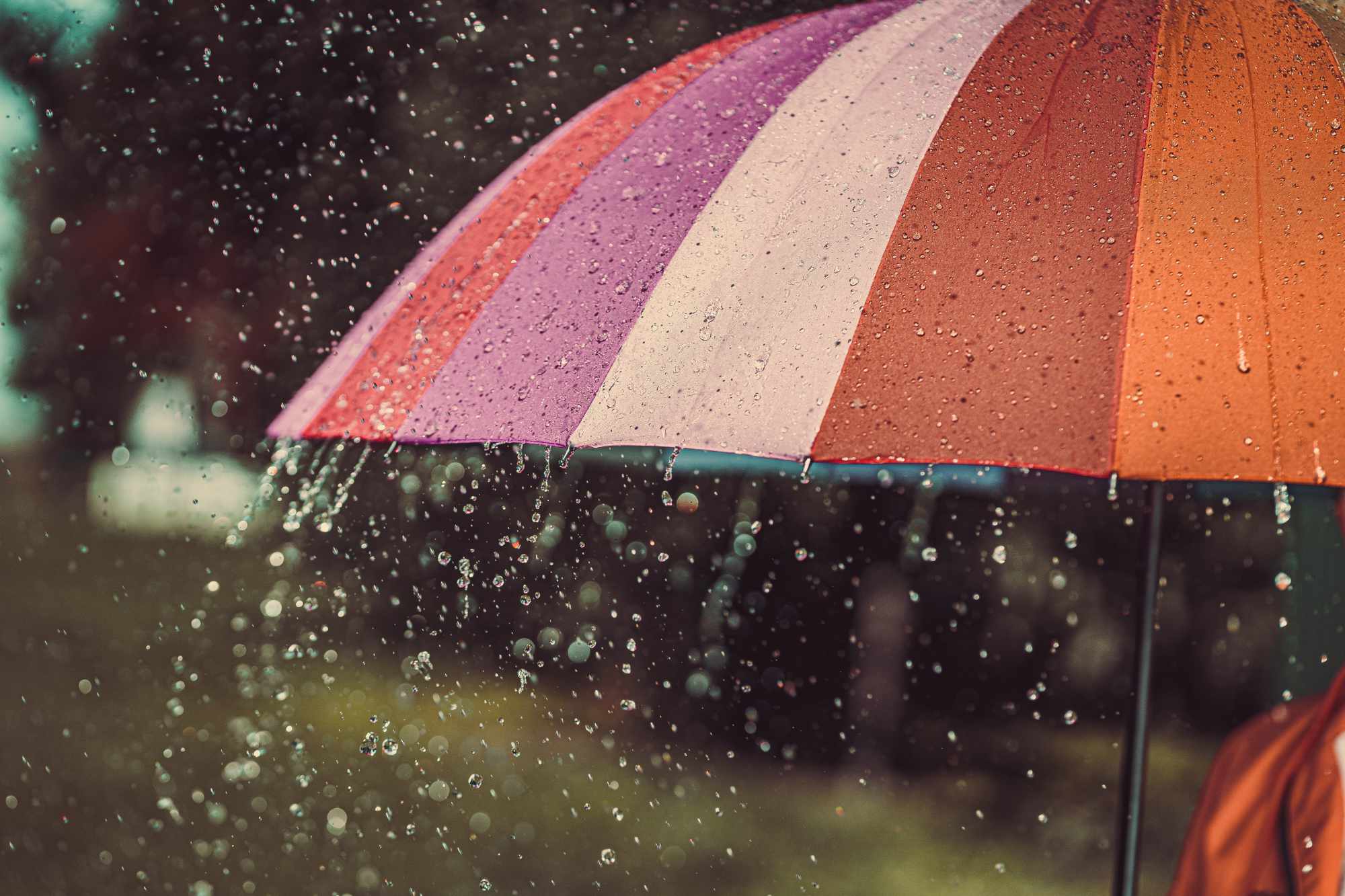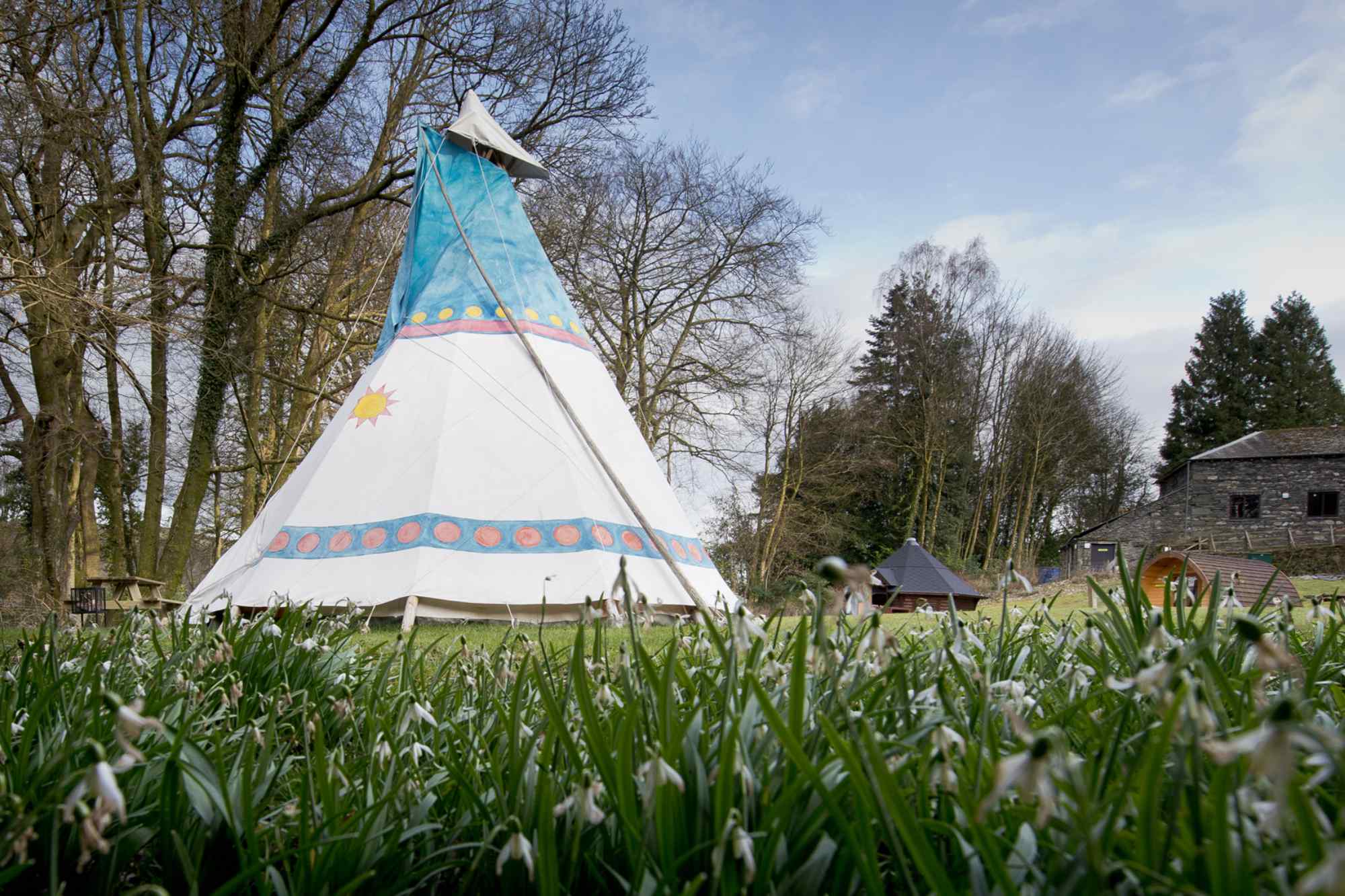To be awestruck by an engineering wonder of the world you don’t need to travel to the Pyramids or even as far as the Humber Bridge. There’s one a minute’s walk from YHA Ironbridge Coalport, past the kilns of the old china works and the duck houses bobbing on the canal: the Hay Inclined Plane.
The Plane was completed in 1793 to a design that won a competition to solve a tricky problem: how to get heavy loads down the very steep hill from the Shropshire Canal at the top to the Coalport China Works and other factories along the banks of the River Severn below. The conventional approach would have been to build a succession of 27 locks, but this would have been very expensive and added three hours to every journey. The innovative Plane allowed box-shaped tub boats, each weighing up to five tons, to be hauled into wheeled cradles and slid down a railway track to the bottom in just four minutes. They were counterbalanced by empty boats being pulled up the other track to the top. To imagine it in action is to be struck by the ‘can do’ approach of our Georgian and Victorian forebears.

Ironbridge Gorge, near the new town of Telford in Shropshire, is where the Industrial Revolution began. Today it’s a UNESCO World Heritage Site packed with reminders of those extraordinary times: magnificent, fortress-like factories, blast furnaces, towering chimneys, and long, dark tunnels. There are 10 museums and in each of them The Ironbridge Gorge Museum Trust has done an amazing job of bringing history to life for both adults and children.
A good place to start on your journey back in time is Blists Hill Victorian Town, 20 minutes’ walk from the hostel up through the woods. From the moment you enter you are immersed in the sights and sounds of Victorian Britain. You hear the horses’ hooves on the cobbles and the unrelenting clang of the steam hammer, and can almost feel the heat rising from a glowing river of molten iron as it is poured into a mould.
The town is built around the ruins of the Blists Hill Blast Furnaces and is made up mainly of painstakingly reconstructed buildings of the era, brought here from other locations. There are all kinds of industrial premises, including a foundry and a brick and tile works; small businesses such as a locksmith and a cobbler; and a wide range of shops. There’s a pub, a doctor’s surgery, a corrugated iron mission church, and a school, as well as pleasure gardens and allotments.
As you enter the town you can pop into Lloyd’s bank to change your modern pounds into Victorian farthings and pennies to spend on food and souvenirs, a great opportunity for kids to tackle the mental arithmetic workout that is the pre-decimal system.
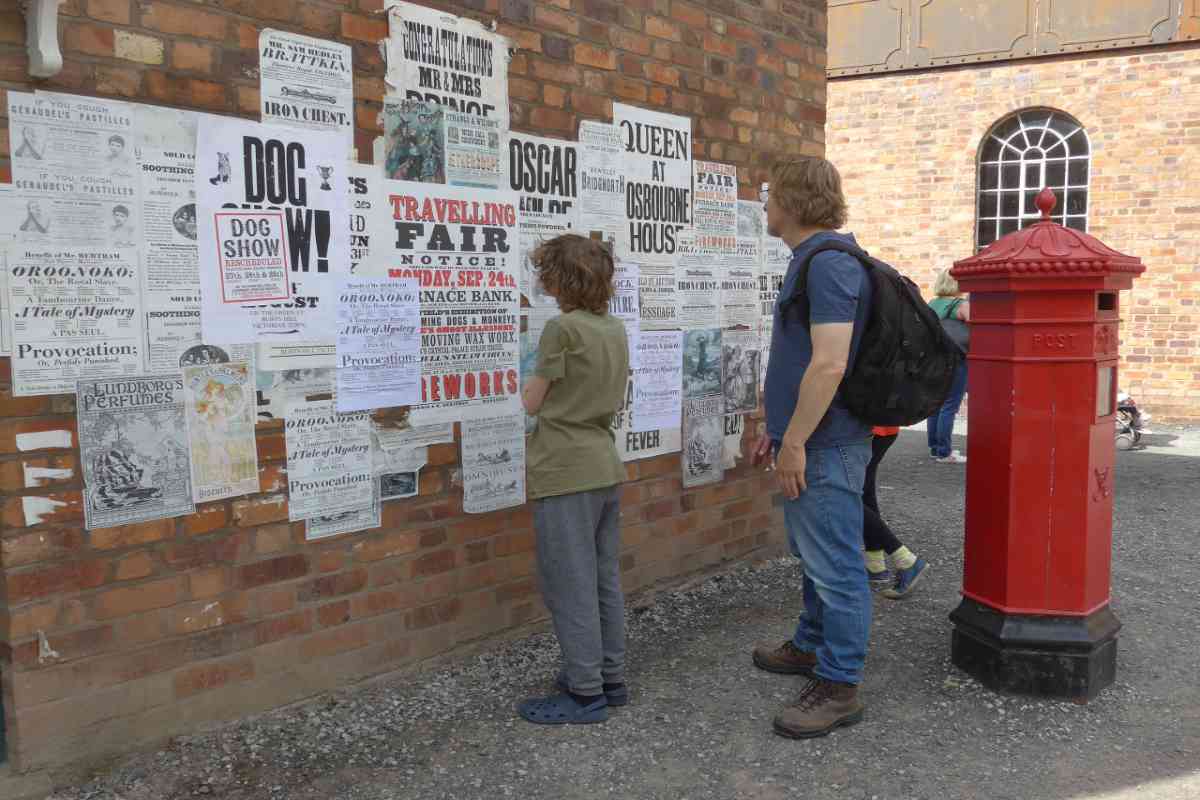
Then you can wander at will, taking part in activities such as making a poster with an old printing press, riding in a horse and cart, or joining in a pub sing song, and chatting to the Victorians, who are everywhere, and very approachable and keen to answer questions.
You can see how crowded an ordinary house was, how tiny the beds were, and what few material possessions children had: just a few simple toys made out of scraps of material and buttons. Without running water or electricity, how hard it must have been to wash the family’s clothes and keep the place clean.
In the draper’s you can pick up an eight pound weight that shows how heavy a typical Victorian woman’s clothes were, and in the doctor’s surgery and the pharmacy you can learn about 19th century medicine. Above the stationer’s shop you can explore the history of the postal service, and in the photographer’s studio take part in a photo shoot.
Then it’s time for a lunch of chips, or some fresh rolls from the bakery, and a bag of rhubarb and custards weighed out from a glass jar in the sweet shop. In the afternoon why not visit the fair? Try your luck on the coconut shy or whirl around astride a giant chicken on the beautifully-restored carousel (‘Refined Novelty Pleasure & Safety Combined for All Classes’).
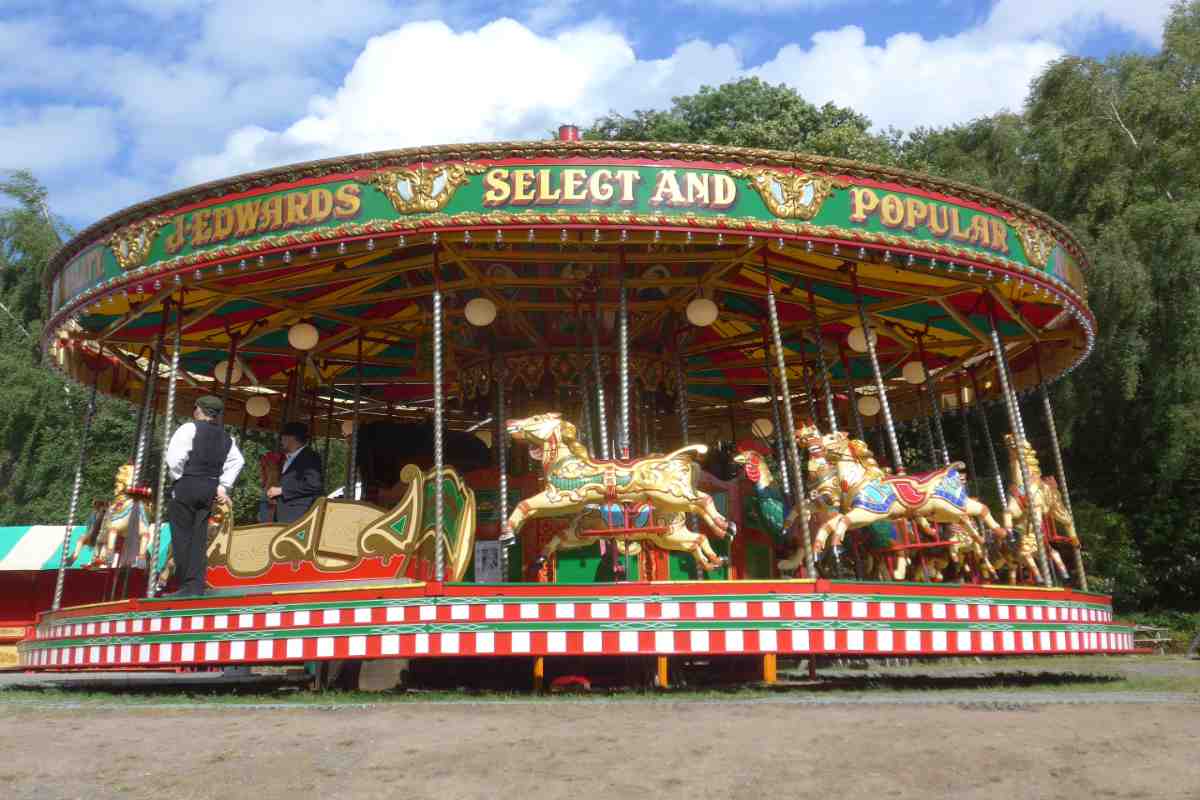
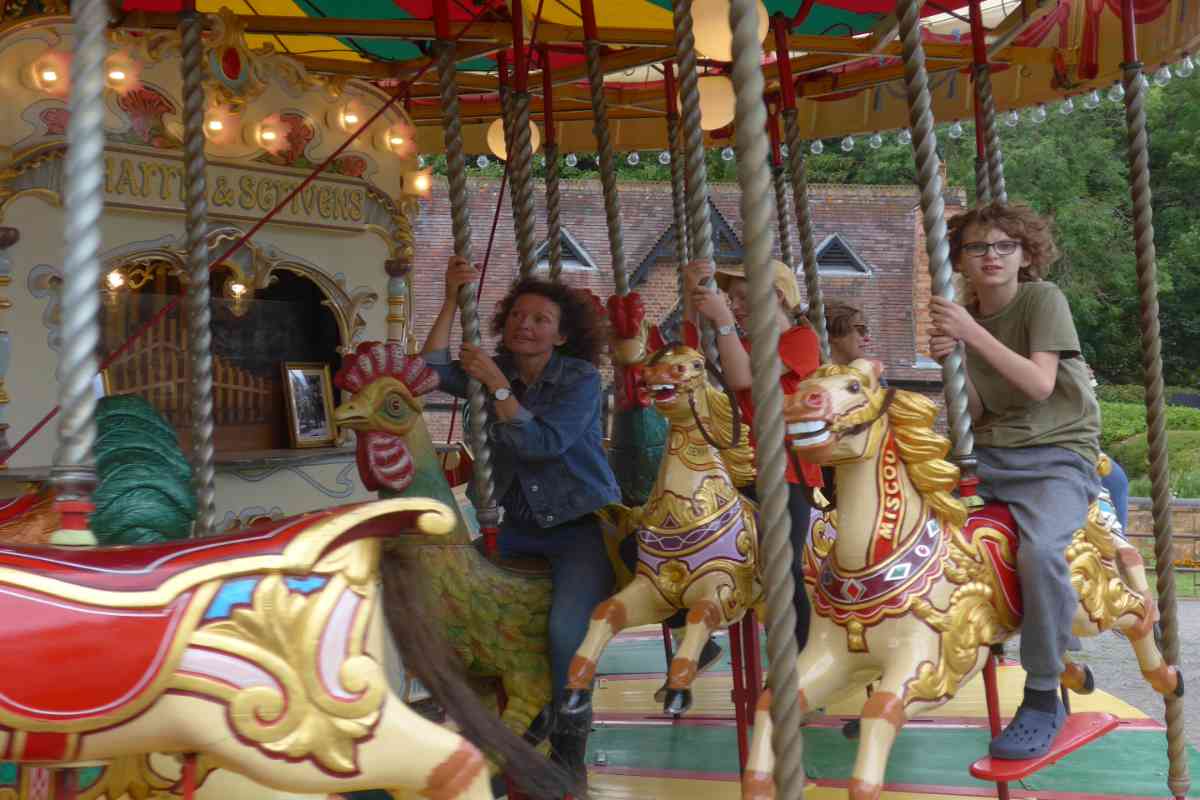
Pasted to the town’s walls are signs and posters showcasing the many fancy and flamboyant fonts of the time. They advertise everything from carpet cleaner to some of the Victorians’ more bonkers inventions, for example ‘Vigor’s Horse-Action Saddle: A Perfect Substitute for the Live Horse’.
There’s also an opportunity to see the Hay Inclined Plane close up, as it’s in the grounds of Blists Hill, and two huge Blowing Engines from a blast furnace, named David and Sampson. At the far end of the site there’s a playground with mini industrial buildings, grey sand, and a unique musical instrument made from steel tubes.
Blists Hill was so much fun that we spent two days there. But there are many other things to do. Enginuity in Coalbrookdale is a brilliant hands-on science centre. Situated near the Old Blast Furnace, where, in 1709, the first Abraham Darby’s new method of smelting iron using coke sparked the Industrial Revolution, it brings the history of human inventiveness to life. For example, there’s an interactive game where you jump through the steps of making iron, and a big model showcasing the early use of water power in Coalbrookdale. Enginuity also encourages visitors to think about the problems created by industrialisation, and how these might be solved by new inventions. There are so many fascinating exhibits: one explains different ways of building a bridge, another is about inventor Thomas Parker, who built the first electric car, in 1884. There’s a sensory room full of LED lights, and an interactive sandpit, which includes a game based on contour lines.

At the Museum of Iron, also in Coalbrookdale, we found out more about all the different methods of making iron and steel, and at the Jackfield Tile Museum near the hostel learnt how the Victorians’ growing understanding of public health led to a new interest in wipe-clean, hygienic surfaces, which in turn generated a huge market for ceramic tiles. There are recreations of bathrooms, a London tube station, and a mural from a children’s hospital, and a new display of beautiful tiles from all over the world, collected by the late John Scott.
Right across the courtyard from the YHA is the Coalport China Museum. Again it’s hands on: children can borrow a magic tea cup that ‘wakes up’ the exhibits to speak to them; make things from clay in the workshop; and go inside one of the old kilns, piled high with saggars — rough clay containers that protected the delicate porcelain within — as sound and light effects mimic the firing process.
A map from hostel reception shows all these possibilities and more, including a peaceful walk along the River Severn, along paths and an old railway track, to the iconic Iron Bridge of 1779 that gives the gorge its name.
For our daughter, who is ‘doing’ the Victorians at school this term, there could have been no better introduction. And for our son, whose conclusion, when he studied the period, was that “The Victorians are made of stone”, our visit provided the opportunity to gain a much better understanding of the era through an immersive and inter-active experience.

YHA Ironbridge Coalport is an excellent base to explore, as it’s walking distance or a short bus ride from all the museums. It’s also an atmospheric piece of the history of the gorge: one section dates from 1795 and is part of the original Coalport China Manufactory. The industrial scale of the buildings means that the self-catering kitchen, dining room, and lounges are especially spacious. Outside there is a courtyard cafe called Severnside.
You can plan your trip using the Ironbridge Gorge Museums website.
A family pass gives unlimited access to all the Ironbridge museums, including Enginuity, for a year. It currently costs £82 for two adults and up to four children, or £51 for one adult and up to four children.
YHA has another hostel in Ironbridge, YHA Ironbridge Coalbrookdale. This caters for school and other groups and is sometimes available for YHA Exclusive Hire.
YHA members are entitled to a 10% discount on entry to the Ironbridge Gorge museums.
